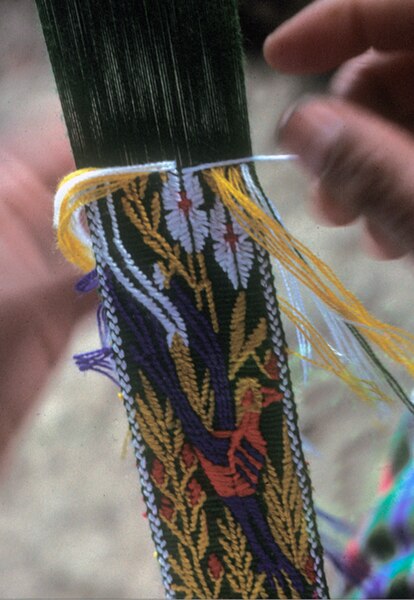Sichuan embroidery or Shu embroidery, is a style of embroidery folk art native to Sichuan and Chongqing, particularly renowned for its brocade fabrics known as Shu brocade. This technique of embroidery originates from Chengdu, the capital of Sichuan, during the time of the Ancient Kingdom of Shu. An excavation of four tombs dating back to the Western Han dynasty, on Mount Laoguan located in Tianhui Town, Chengdu, has confirmed the use of patterning looms for weaving warp-faced compounds in that period.
"Five stars rising in the East" armband, a 3rd-century Sichuan brocade armband discovered at Niya ruins in Xinjiang (also known as Chinese Turkestan); displayed at Xinjiang Institute of Archeology.
Double dragon within pearl roundels, manufactured in Shuangliu between 7th and early 10th century, unearthed in 1959 from Tomb 221 at Astana Cemetery in Turpan, Chinese Turkestan.
Animals and dancing human figures, late period of the Ancient Kingdom of Shu, coinciding with the Warring States period (c. 475–221 BC).
Animals and trees, unearthed at Astana Cemetery in Turpan, Chinese Turkestan; 5th–6th century.
Brocade is a class of richly decorative shuttle-woven fabrics, often made in coloured silks and sometimes with gold and silver threads. The name, related to the same root as the word "broccoli", comes from Italian broccato meaning "embossed cloth", originally past participle of the verb broccare "to stud, set with nails", from brocco, "small nail", from Latin broccus, "projecting, pointed".
Cope and chasuble; Brocade of Lyon. 19th Century
Silk brocade fabric, Lyon, France, 1760–1770.
Detail of hair-sash being brocaded on a Jakaltek Maya backstrap loom.
Large Yunjin brocade loom, Nanjing, China, 2010








